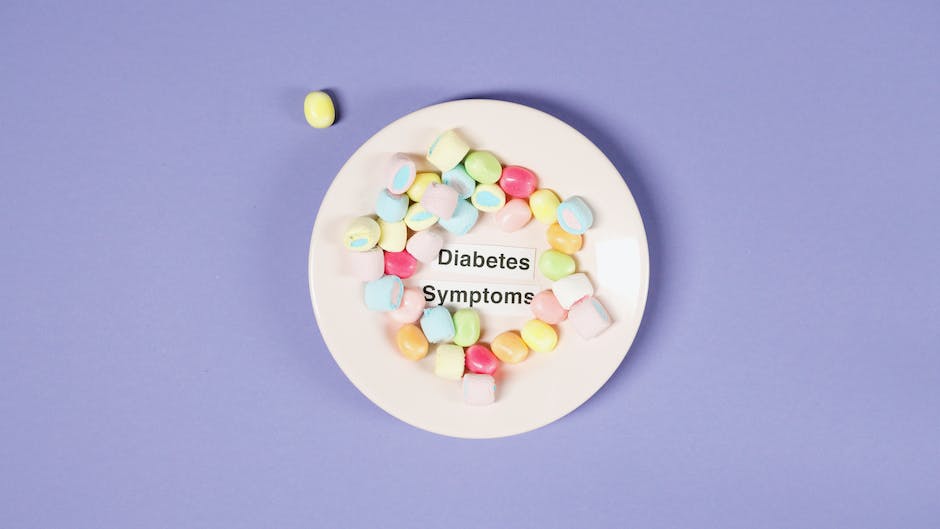Diabetic Ketoacidosis or DKA, a severe and potentially life-threatening complication of diabetes, and its intersection with the global health crisis- COVID-19, demands critical examination, given the abrupt changes in our health landscape. This discussion begins with a comprehensive perspective on the nature, symptoms, causes, and the groups at high risk of DKA, setting the stage for a more profound understanding of its relationship with COVID-19. Following this, we delve into a robust summary of COVID-19, its symptoms, methods of transmission, and effects on individuals with pre-existing conditions such as DKA. This equips us with the necessary background to examine the significant impact of COVID-19 on those diagnosed with DKA, facilitating both understanding and empathy.
Understanding DKA
Understanding Diabetic Ketoacidosis (DKA)
Diabetic ketoacidosis (DKA) is a serious complication that can occur in people with diabetes when their body starts to run out of insulin. This situation can arise when the body’s cells can’t get the sugar (glucose) they need for energy because there isn’t enough insulin to transport it into the cells. As a response, the body starts to burn fat for fuel instead, producing ketones – acids that build up in the blood and can cause a potentially life-threatening condition when the levels become too high.
Symptoms of DKA
The signs and symptoms of DKA can develop rapidly, sometimes within 24 hours. Initial symptoms often include a dry mouth, excessive thirst, and frequent urination. Over time, additional symptoms can manifest, such as abdominal pain, nausea, and vomiting, resulting in rapid breathing, fruity-scented breath, or a flushed face. If left untreated, symptoms can escalate to confusion, fatigue, difficulty waking up, or even loss of consciousness.
Causes and Risk Groups for DKA
DKA primarily affects individuals with type 1 diabetes, but it can also occur in those with type 2 diabetes under certain conditions. Triggers for DKA might include not enough insulin, stress, physical trauma, and certain illnesses such as pneumonia or urinary tract infections. Specific medication like steroids and some others can also increase the susceptibility to DKA.
Risk groups for DKA predominantly include individuals with a known history of diabetes, especially those who fail or forget to take their insulin, or who face difficulty managing their diabetes due to sickness. The condition can also occur in people who are not aware they have diabetes.
A Deeper Look at DKA and COVID-19
It’s been observed that individuals with certain underlying health conditions, such as diabetes, are at a heightened risk when it comes to COVID-19. Diseases like DKA have shown an increased propensity to occur when a diabetic person contracts the COVID-19 virus, as a result of the physiological stress caused by the viral infection. Furthermore, an inflammatory response brought on by a disease like COVID-19 can elevate blood sugar levels, impacting insulin reserves.
During the present period marked by the COVID-19 pandemic, there has been a noted increase in DKA cases reported by healthcare professionals. This surge is particularly observed in individuals with diabetes that is undiagnosed or inadequately managed. Physicians are urging those with diabetes to take added precautions and emphasize that properly managing blood glucose levels is of utmost importance. They also remind their patients to access medical help immediately should they start noticing symptoms connected with DKA.

COVID-19 Overview
A Closer Look at COVID-19
The novel coronavirus, christened as COVID-19, saw its first emergence in 2019, and it swiftly escalated into a global pandemic. This infectious disease is a result of the SARS-CoV-2 virus. Its most commonly noted symptoms encompass experiencing a fever, dry cough, fatigue, along with the loss of taste or smell. In its extreme state, it holds a potential risk of causing difficulty with breathing, chest pain, and possible loss of speech.
The primary mode of transmission is human contact, where coming too close to someone infected results in an infection when they cough, sneeze, talk, or exhale. Droplets emanating from these actions can land on those nearby, entering their system via mouth, nose, or eyes. It can also be caught by touching a surface carrying the virus and then inadvertently touching one’s face, although this is not perceived as the main route of transmission.
Individuals with prior conditions like diabetes, heart disease, obesity, and respiratory diseases face a higher risk, as their symptoms from COVID-19 can turn severe. It is especially crucial for these individuals to do their best to minimize COVID-19 exposure.
COVID-19 and Pre-existing diabetes
Diabetes is a chronic health condition that affects how your body turns food into energy. Diabetic Ketoacidosis (DKA) is a serious problem that can occur in people with diabetes if their body starts running out of insulin. In these circumstances, the body starts to break down fat at a rapid rate and produce ketones, which can cause the body to become acidic.
People with diabetes, particularly those with type 1 Diabetes, are at a higher risk for DKA. However, sickness or bodily stress can also trigger DKA in both people with type 1 and type 2 Diabetes. This brings us to COVID-19.
COVID-19 and its Impact on DKA
COVID-19 can lead to metabolic complications in patients with pre-existing diabetes. The infection and the systemic inflammatory response it prompts are likely to stress the body and may precipitate DKA. Further, patients may experience difficulty in managing their blood glucose levels due to factors like changes in appetite, issues with diabetes medication, or lack of regular physical exercise while being quarantined or hospitalized.
Recent studies show a high prevalence of DKA in patients with COVID-19 and pre-existing diabetes. The inflammatory response caused by a severe case of COVID-19 could exacerbate insulin resistance, making blood sugar management even more challenging and potentially leading to a state of DKA.
One potential concern is that the similarities in symptoms between DKA and COVID-19, such as fatigue and difficulty breathing, might lead to a delay in DKA diagnosis. It is therefore crucial for healthcare providers to have high levels of suspicion for patients with diabetes showing these symptoms, ensuring timely detection and appropriate management to avoid severe outcomes.
Preventing COVID-19 is crucial for everyone, but it is especially vital for people living with diabetes. Individuals with diabetes may find it challenging to keep their blood sugar levels under control if they become infected with COVID-19, leading to a potential onset of Diabetic Ketoacidosis (DKA). Thus, it is critical that they often monitor their blood glucose levels, maintain a healthy diet, and stay in contact with their healthcare providers.

Impact of COVID-19 on Individuals with DKA
The Interplay between Diabetic Ketoacidosis (DKA) and COVID-19
Diabetic Ketoacidosis (DKA) is a complex health issue associated with diabetes, characterized by the body producing excessive amounts of blood acids or ketones. Although DKA is more prevalent in individuals with type 1 diabetes, it can also affect those with type 2 diabetes, especially during periods of illness or intense stress. With the onset of the COVID-19 pandemic, the difficulty of managing DKA in tandem with COVID-19 has become increasingly apparent.
COVID-19, Hyperglycemia, and DKA
Emerging studies have shown that patients with COVID-19 who also have diabetes are at a higher risk of developing severe symptoms and complications. COVID-19 can induce a state of hyperglycemia due to factors like the stress of illness, altered dietary habits, reduced physical activity, or modifications in treatment regimens due to isolation or hospitalization. These can further lead to the development of complications such as DKA.
Increased Severity and Complications
While DKA is typically a result of uncontrolled diabetes, it appears to be an independent risk factor for poor outcomes in patients with COVID-19. The severity of COVID-19 infection in individuals diagnosed with DKA may intensify due to the body’s inflammatory response to the virus. This can result in a state known as a “cytokine storm”, which can lead to multi-organ failure, and ultimately, death.
COVID-19 patients with DKA have been shown to experience a longer intensive care unit (ICU) stay and have higher rates of mortality. Additionally, the management of patients presenting with both DKA and COVID-19 may be challenging due to intersecting pathophysiological mechanisms, necessitating careful monitoring and specific therapeutic approaches.
Treatment Challenges for DKA Patients with COVID-19
The management of DKA in the context of COVID-19 infection is complex and demanding. The standard treatment protocols for DKA involve aggressive fluid resuscitation, insulin administration, and the correction of electrolyte disturbances. However, these may be difficult to apply in patients with severe COVID-19 due to concerns over fluid overload and heart failure.
Moreover, the standard strategy of managing mild cases of DKA at home to avoid hospital admission may not be feasible for COVID-19 patients. This necessitates increased remote monitoring and digital health interventions to support such patients efficiently and safely.
As we come to understand that our battle with the COVID-19 pandemic is not just about dealing with a contagion but also managing its effects on pre-existing health issues like diabetes, new avenues of research and treatment development have emerged. One such example is Diabetic Ketoacidosis (DKA), a grave complication that can occur in diabetic patients, which is poorly understood in the context of COVID-19. Medical practitioners are working tirelessly to redefine treatment protocols and improve patient care for this intricate problem where diabetes complications and COVID-19 intertwine.

Photo by anniespratt on Unsplash
Preventive Measures and Treatment Options
Taking a Closer Look at DKA and COVID-19
Diabetic Ketoacidosis (DKA) is a severe diabetes complication manifesting as high blood sugar levels coupled with a dangerously low insulin quantity. It’s a worrying issue for diabetics and medical professionals alike. In contrast, COVID-19 is a highly infectious disease attributed to the novel SARS-CoV-2 virus, which has proven to be highly contagious, particularly when people are in close proximity. The connection between DKA in diabetic patients and COVID-19 is being constantly studied to allow for better handling of these complex medical cases.
Preventive Measures for DKA Patients
The hyperinflammatory state and immune dysregulation seen in severe COVID-19 can impose an increased risk for DKA patients. Therefore, stringent preventive measures should be taken by individuals with DKA to reduce the risk of contracting the virus.
They should follow the universal guidelines concerning mask-wearing, frequent hand washing, and maintaining social distance. More importantly, the better the diabetes control, the lower the risk of developing adverse outcomes from the virus. Hence, patients with DKA should proactively manage their diabetes by monitoring blood glucose levels and taking their prescribed medications.
Vaccination against COVID-19 is strongly recommended for all individuals, including those with DKA. The vaccines have been shown to reduce the severity of the virus and are crucial in preventing hospitalization and death.
Treatment Options for DKA and COVID-19
For patients diagnosed with both DKA and COVID-19, a multi-faceted treatment approach is necessary to manage both conditions effectively.
DKA management includes fluid replacement, insulin therapy, and electrolyte management. Fluid replacement is critical to restore circulation volume, while insulin therapy is used to suppress the overproduction of glucose. Electrolyte management, like potassium regulation, is necessary to avoid further medical complications.
In terms of COVID-19 treatment, in the severe or hospitalized cases, the medications remdesivir (an antiviral drug), dexamethasone (a steroid), or monoclonal antibodies (proteins that help the immune system fight off the virus) may be given. The choice of treatment often depends on the severity of the patient’s condition.
Hydration, proper diet, regular monitoring of vital signs and blood glucose levels, alongside standard COVID-19 treatments and following advice from healthcare providers, are key in achieving a positive outcome for these patients.
It’s worth noting that clinical trials are ongoing, and treatment protocols are being updated as new data emerges. Therefore, it’s essential to stay updated with information from reliable sources, such as the Centers for Disease Control and Prevention (CDC), the American Diabetes Association, and the World Health Organization (WHO). Also, consult the healthcare provider for individualized treatment decisions and management strategies.
Following these guidelines, maintaining a healthy lifestyle and keeping up a good relationship with the healthcare provider can significantly improve the prognosis and reduce the severity of DKA and COVID-19 in affected individuals.

Arguably, knowledge remains our most potent defense, especially when contending with the invisible enemy- COVID-19, which could drastically impact those living with conditions such as DKA. Hence, this discussion aimed to enlighten readers about the intricate dynamics between DKA and COVID-19, thereby encouraging prevention efforts and bolstering the determination of those living with these conditions. Finally, outlining the array of preventive measures and treatment options reiterates the significant progress we’ve made against these health adversities. It accentuates our collective commitment and resilience as we continue our battle against COVID-19 while lessening the vulnerabilities of those among us who live daily with DKA.
